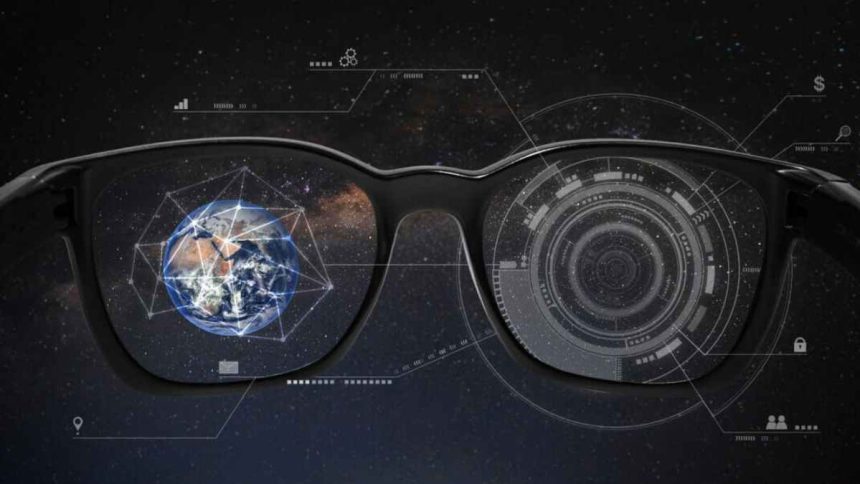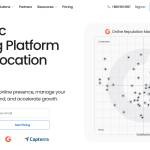Marketers must keep up with more than just social media as the digital world evolves daily. More firms are searching for methods to incorporate new and developing technology.
As technology advances, so does the way companies interact with their customers. Augmented reality (AR) is rapidly becoming one of the most significant game changers in the industry. AR functions together to generate captivating and impactful customer-centric experiences. Artificial intelligence (AI) is the core technology that enables these immersive experiences.
In this post, we will discuss what AI and AR are, how and where they can be used, their benefits, and how AR developers and AI consultants can help businesses to succeed.
What Exactly Is AI?
Algorithms and analytical algorithms capable of accomplishing tasks without specific instructions are included in AI, specifically deep and machine learning. Machine learning models are fed training data from which they learn correlations and patterns that will assist them in achieving their objectives. These models power things like sophisticated photo organizers and predictive keyboards.
What Exactly Is AR?
AR is a hybrid of digital and physical surroundings. In a single, immersive environment, computer-created things coexist and react with the actual world. This is accomplished by combining data from several sensors — cameras, GPS, accelerometers, gyroscopes, and so on — to create a digital image of the environment that can be superimposed on top of the real one.
How Can AI and AR Be Used Together?
Although AR and AI are independent technologies, they may be combined to create new experiences.
A 3D model of the environment must be built to enable digital things to coexist with physical ones in AR. Visual data, together with gyroscopes and accelerometers, is utilized to create a map of the environment and monitor movement within it. Most of these jobs are still carried out using standard computer vision approaches that do not use machine learning.
However, AI models have proven exceedingly proficient at many tasks necessary to create immersive AR experiences independently.
Deep neural networks can detect horizontal and vertical planes, estimate depth and segment pictures for realistic interference, and even infer 3D locations of objects in real-time. Because of these capabilities, AI models are increasingly replacing some of the more classic computer vision technologies that support AR experiences.
AI models are being placed on top of AR as well. Effects may be created using the same alternative — that performs a person’s occlusion. Real-time face-swapping may change a person’s age or gender. When done correctly, AI and AR may be used to create immersive digital apps.
Artificial Intelligence and Augmented Reality: What Are Their Benefits?
Adopting these sophisticated technologies will undoubtedly cause a paradigm change in human behaviors, deliverables, and roles. Things will be accessible at the sound of command, and somebody will always help you. The following are the key benefits that AR and AI will provide:
Sorted Entertainment Interests
Virtual assistants, voice assistants, and AI-based technologies are the future wave. They will make their market debut by understanding user behavior patterns, feeding their systems with users’ desires, and serving them the dish they want to devour.
Makes World Being Automated
When these technologies debut in the supply chain business, they will take the role of people as manufacturers. Item testers and distributors Everything around the world will be manufactured, tested and sold by intelligent machines.
Improves Training and Education Excellence
Real-world training involves the possibility of endangering human life. Incorporating AI and AR into the education industry is expected to increase the quality of learning and training. These technologies will provide 3-D training comparable to but far more efficient than real-time training.
Faster Manufacturing and Goods Distribution
AI and AR are anticipated to boost the productivity of the global supply chain by replacing human labor in the production and manufacturing industries. Because of the internet, practically the whole globe relies on a massive supply chain known as the global supply chain. Incorporating AI and AR into the supply chain will cut manufacturing time in half and enhance quality by a factor of two.
AI and AR are the solutions of the hour when market ills such as counterfeiting, reliance on stakeholders, and quality are at risk. They will govern the future by playing a critical role in product development and sales and improving numerous industries.
Conclusion
Artificial Intelligence and augmented reality services may help you assess their relevance to your brand’s voice and target audience. It also allows you to pitch their integration to the appropriate parties. However, choosing which one to concentrate on might take a lot of work. You’ll need to weigh their advantages and disadvantages to choose which fits your needs best.
Lynn Martelli is an editor at Readability. She received her MFA in Creative Writing from Antioch University and has worked as an editor for over 10 years. Lynn has edited a wide variety of books, including fiction, non-fiction, memoirs, and more. In her free time, Lynn enjoys reading, writing, and spending time with her family and friends.















